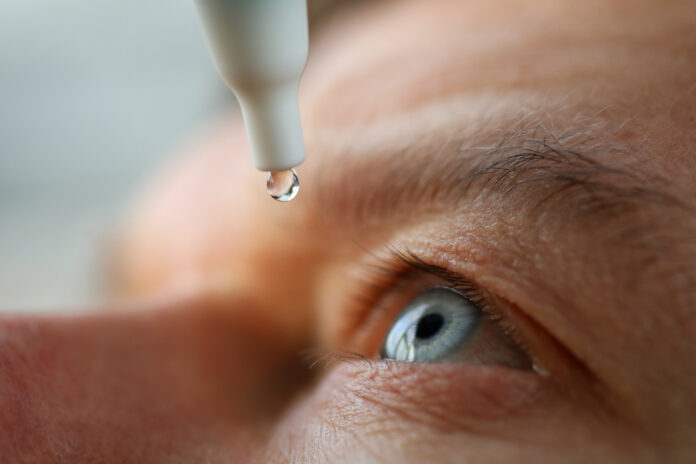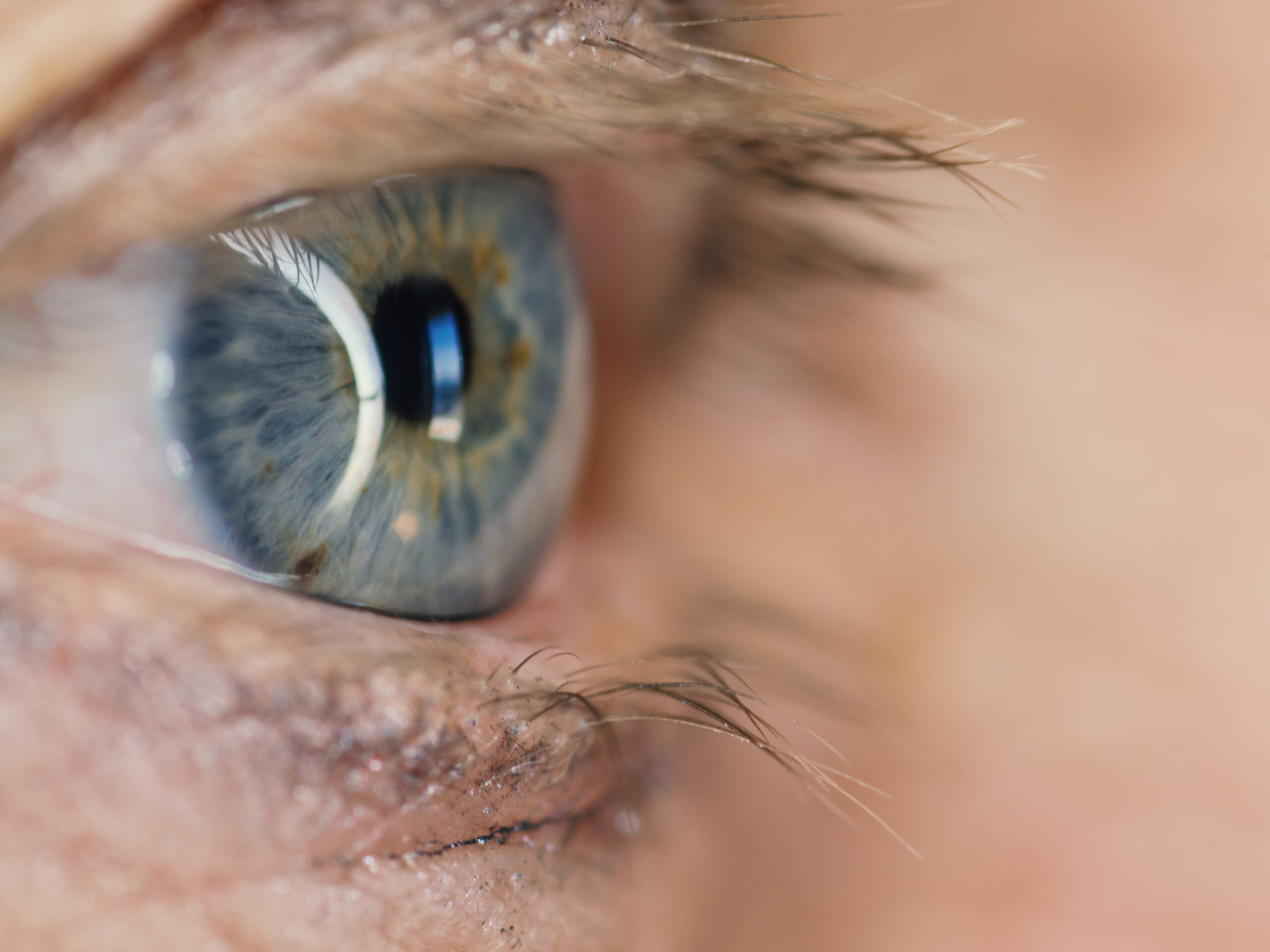If you’ve seen the eye-catching commercials for eye drops that claim to improve close-up vision, you may think this sounds too good to be true. Can you really toss your reading glasses, you wonder? The answer to this question, in short, depends on what your expectations are and how much you are willing to pay for what might be limited improvement.
Last October, the FDA approved Vuity for presbyopia, the blurry near-vision that just about everyone over 40 is familiar with—or will become familiar with eventually. Presbyopia develops with age as the lens of the eye becomes less elastic and loses the ability to focus on close-up objects.
Say what?
The active ingredient in Vuity—developed by AbbVie, a subsidiary of the pharmaceutical company Allergan—is pilocarpine, which has long been used to treat glaucoma. Though Vuity is the first eye drop approved to treat presbyopia, other products are in the pipeline, including another pilocarpine formulation, MicroLine, which will come with an applicator to deliver a lower volume of medicine in a more consistent manner.
The FDA’s approval for Vuity was based on its review of two industry studies, which included a total of 750 middle-aged people (ages 40 to 55) with presbyopia. In GEMINI 1, a randomized clinical trial published in JAMA Ophthalmology in April 2022, the researchers assigned 323 participants to use either Vuity (one drop a day in each eye) or a placebo for 30 days. Overall, the Vuity group showed greater improvement in close-up vision than the control group at day 30, with 31 percent versus 8 percent being able to read at least three more lines on an eye chart when the light was low, without any change in distance vision. The difference between groups was greatest three hours after using the drops, with no differences seen after eight hours.
According to Marlon Maus, M.D., an ophthalmologist and public health professional at the University of California, Berkeley, and a member of our editorial board, “Being able to read three more lines may be beneficial for many people. It could, for example, mean going from reading the larger print in a newspaper or magazine without glasses to reading the smaller print of the article at a comfortable distance. But three lines for you is not the same for everyone—it depends on how ‘bad’ your vision is to start.” If you have significant presbyopia (you wear +2.00 or higher readers), Vuity may not be enough for you to see very small print, such as the standard font size of text messages on your phone. Moreover, some people have no improvement. Dr. Maus added, “The two clinical studies found that only one-quarter to one-third achieved the goals set.”
Say how?
The eye drops work in two ways. Pilocarpine shrinks the pupil (the opening in the eye that allows light in), which increases the depth of field. This accounts for almost all the vision improvement. This active ingredient also contracts the ciliary muscles in the eye—the muscles that affect the shape of the eye’s lens to enable light to focus on the retina—so that the lens becomes more curved.
The changes occur within 15 minutes of applying the eye drops and are strongest for up to six hours, after which the effect diminishes. But there’s much variability in the outcome—some people experience better near-vision for just a couple of hours, while others, as noted above, get no benefit. Be aware also that once you start the medication, it can take about 30 days to achieve the best results, though the effects with each application still last only about six hours.
Vuity caveats
Here are some other things to know about Vuity before you toss your readers:
- Older adults, especially if they have some cataract development, will probably not benefit at all from the drops. And the drops won’t prevent progression of presbyopia.
- The most common side effects are eye redness and headache. In some cases, the redness doesn’t resolve until the product is stopped. The drops may also burn, mostly when you put them in. Vuity uses a special medium to decrease the eye burning, but many people will still have discomfort that they never get used to, which can be a reason to stop using the product.
- Pilocarpine is in a category of drugs referred to as miotics, which increase the risk of retinal detachment. According to Dr. Maus, “In high-risk people—including those who have extreme nearsightedness, an eye injury, a previous retinal detachment, or a family history of one—there’s a small increased risk of retinal detachment. It’s small, but it’s there, as noted by the company in its materials.”
- There are no published long-term studies on Vuity. “Though it’s not a totally new product, we don’t really know what the long-term effects of this new use for an older drug will be, particularly in older age groups,” said Dr. Maus. “In a perfectly healthy eye (in early presbyopes), the risk is probably minimal, however.”
- Vuity and driving may not mix, as the company cautions. Because the drops work largely by contracting the pupils, you may have problems seeing and navigating in low-light conditions until the pupils enlarge again—and that can take longer than six hours, after the drug’s strongest effects have worn off. That is, for some people, being on Vuity means making the choice between reading without glasses and driving.
- Vuity is not covered by insurance, and its price varies depending on where in the country you buy it and what pharmacy you use. Its average retail price is about $95 for a 30-day supply. Prescription drug discount cards and apps, provided by such companies as GoodRx, may bring down the price a little (about $85).
BOTTOM LINE: If you want to try Vuity, you should consult with an ophthalmologist or optometrist to make sure you don’t have contraindications. “If you’re not at risk and want to give it a try, go ahead,” advises Dr. Maus. But he’s not completely sold on the product, either. The rather steep price, along with side effects, lack of long-term studies, limited benefits, and potential increased risk when driving at night, may not make it worth it.





